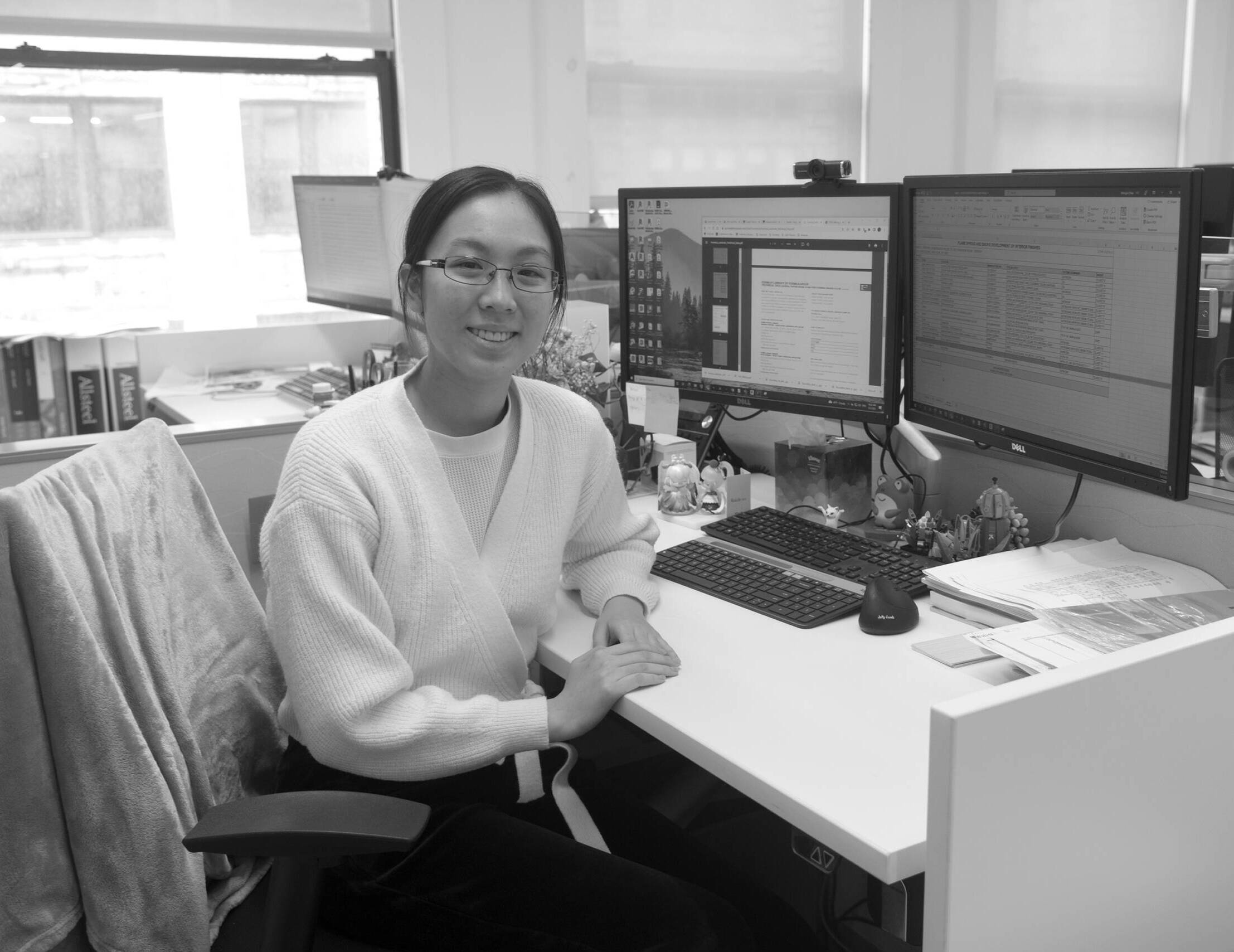10Qs: Getting to Know the People Behind the Projects…Mengjie
posted May 3rd, 2023 in Interior Design
by E4H
#10Qs #interiordesign
Share

“By embracing modular and adaptable design principles, healthcare facilities may create versatile spaces that seamlessly cater to diverse patient groups, allowing for effortless reconfiguration as needs shift.”
Mengjie Zhao is an interior designer in the New York office. She is currently on the Mount Sinai Hospital and Regeneron teams.
1. Where did you grow up?
I was raised in Wuhan, located in the middle of China where the Yangtze River runs through. I later moved to New York to attend college.
2. How did you get into design?
My adventure into design started when I visited the Shanghai Museum. I was amazed by the beautiful art and architecture I saw there. This experience made me curious and excited to learn more about these fields. In high school, I took a class on painting and art history, which made me fall in love with design even more. I enjoyed how design can be used to solve difficult problems and make a real difference. That’s when I knew I wanted to pursue a career in design.
3. Who influenced you?
My art teacher taught me to appreciate the beauty in the world and develop a keen eye for detail. These skills carried over into my design studies. In a studio project, my college professor encouraged me to explore new design approaches to help marginalized communities. This encouragement helped me push beyond my creative boundaries.
4. Why healthcare architecture?
A lot of time during my childhood was spent in hospitals due to health issues. As a result, I was acutely aware of the negative impact that the hospital environment can have on patients, particularly children. The sterile, clinical setting was not conducive to healing, and I often longed for the warm, welcoming atmosphere of home. This experience strongly influenced my interest in healthcare design and motivated me to explore ways to create more comfortable and inviting healthcare environments.
5. What inspires you?
Visiting exhibitions and museums is a powerful source of inspiration for me. I enjoy exploring the different ways that artists use form and atmosphere to create impactful and engaging works of art.
6. What advice can you give young designers?
My advice for designers is always to stay curious and open to learning. The field of healthcare design is constantly evolving and there is always something new to discover and explore. Also, learning from others is significant, especially seeking out mentors and colleagues who can offer guidance and advice.
7. Most memorable project?
One of my most memorable projects is Regeneron Buildings 5 and 7. It was my first time working on a lab project and it presented some truly unique challenges. I was so glad to collaborate with a talented team, which allowed us to explore innovative design solutions
8. What is your favorite part of the design process?
I like the Design Development phase because it is when the initial concept starts to take shape and the project really starts to come to life. I love exploring different ideas and solutions, and the design development phase allows for a lot of creative experimentation.
9. Where do you see healthcare design in 5 years?
The significance of modular and adaptable design in healthcare is on the rise, as it offers enhanced flexibility in addressing the evolving demands of healthcare. The temporary hospital wards constructed during the COVID-19 pandemic showed this concept. By embracing modular and adaptable design principles, healthcare facilities may create versatile spaces that seamlessly cater to diverse patient groups, allowing for effortless reconfiguration as needs shift.
10. How do you unplug?
I love playing board games with my friends and spending time with them in nature. These activities help me relax, have fun, and recharge my batteries.